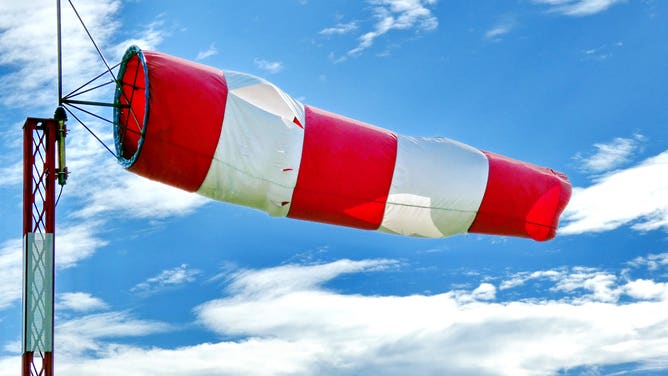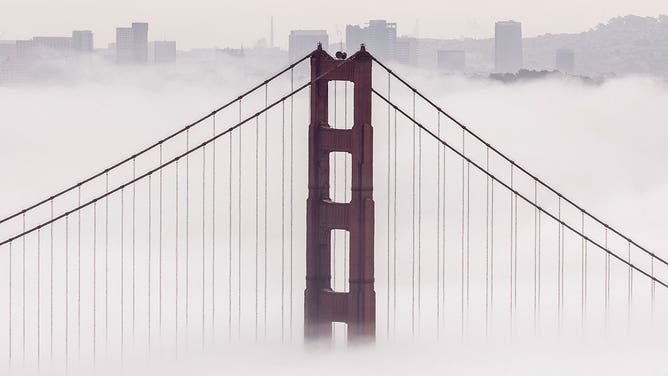What makes the wind howl?
The sound is produced when wind blows over objects and causes friction. This friction produces sound waves, which travel through the air and can make a range of sounds.
Listen to the Golden Gate Bridge screaming in a storm
One driver gives his reaction to the eerie screams uttered by the Golden Gate Bridge in the weekend's atmospheric river storm. Credit: @dfrideger/Twitter
A cacophony of screams enveloped the man as he crossed over the water.
Is this a scene from a horror movie? No.
It’s from a video of a driver on San Francisco’s Golden Gate Bridge when the wind blew through the bridge’s steel cables and sang otherworldly howls.
So, what causes the wind to howl?

A red and white windsock blows in the wind.
(Mark Konig / Unsplash / FOX Weather)
Called eolian sound or aeolian tones, the sound is produced when the wind blows over objects and causes friction. This friction produces sound waves, which travel through the air and can make a range of sounds.
For example, wind encountering moving objects, such as leaves, can produce irregular sounds.
On the other hand, the wind encountering fixed objects such as buildings and wires – or rails on a bridge, for that matter – can create a humming noise or other constant sounds.

The Golden Gate Bridge is seen surrounded by a layer of fog in Sausalito, California, on Wednesday, March 2, 2022.
(Stephen Lam / San Francisco Chronicle / Getty Images)
According to Britannica, if the wind were to blow over a stretched wire, the pitch of the sound made by the wind would depend on the wind speed and the size of the wire's diameter.
EERIE SOUNDS WAIL FROM GOLDEN GATE BRIDGE DURING WIND STORM
This is similar to how different-sized reeds in a harmonica can help produce different pitches for a musician.
As far as the Golden Gate Bridge is concerned, a redesigned handrail installed in 2020 is the culprit behind the haunting pitch.
